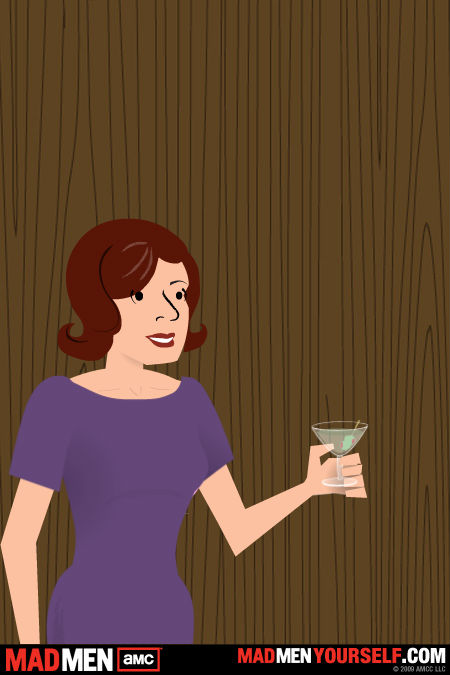Readers who are also TV viewers tend to avoid bragging about being up on the latest American Idol season, but they have no problem discussing with strangers the intimate plot and character details of shows like The Wire or The Sopranos. Adam Sternbergh writes about “Quality Show Fatigue” in the Dec. 8th, 2008 issue of New York Magazine: he just can’t bring himself to be caught in another obsessive need to watch another “quality show” on TV.
I’m a bit behind on my “good for you” cable television show viewing. So last night my s.o. and I watched the first two episodes of Mad Men (season 2 started summer 2008 and is not yet on dvd). The précis is that it’s a show about the men who work in advertising, and the women who serve them, circa 1960. So I immediately pictured a sort of thirtysomething (that late 1980s tv show with two male characters (Michael Steadman and Elliot Weston) who work in advertising, though the show focused as much on their wives), but of course with more sex (since Mad Men is on cable). Then my mind wandered to those other tv shows with male characters who worked in advertising: Bewitched (Darrin) and The Brady Bunch (Mr. Brady) (I know there were others—what were they?).
The first two episodes were immediately engaging: don’t know if it was the acting (wonderfully understated) or the writing (quick dialogue, but not at, say, The West Wing speed), but I was instantly hooked. What is most appalling, of course, is the blatant sexism that women endured in the workplace (and at home) in 1960 (before I was born, but not much). Some of that sexism is still there in 1987 thirtysomething, but not to this degree. One of the “new girls” in the office, Peggy, is a fascinating character from Brooklyn: I suspect at this point that her Pollyanna act is indeed an act and I’m hoping to see her develop as a character (I’m deliberately ignoring any articles/blogs, etc about the show to maintain that “first run” feeling). I gather than the main ad-guy’s wife will soon be a Stepford Wife, and that his girlfriend must be one of those women from the Beat generation anticipating and effectively out-doing the soon to be hippy girl (it is only 1960 in the series).
I’m looking forward to watching more. Of course Lost starts in two weeks and the Tudors’ last season is coming out on dvd next week: so much to watch, so little time. These “quality shows” are like the detective novels that academics feast on during down times: they provide us with nearly literary quality characters, plots and dialogue but with a touch of sex, violence, or intrigue as sweetener. High brow porn?
